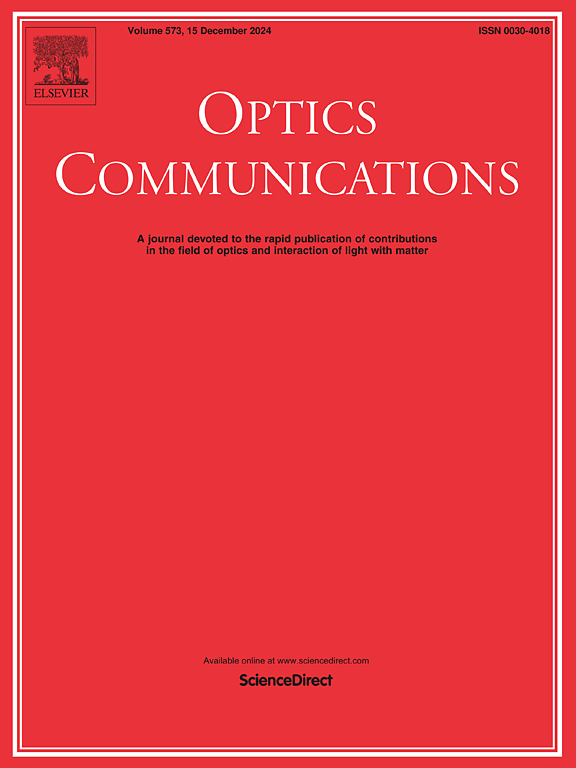全介质透射式窄带滤波器可在宽光谱范围内进行调节
IF 2.2
3区 物理与天体物理
Q2 OPTICS
引用次数: 0
摘要
如何获得具有更宽可调光谱范围和高分辨率的透射光谱一直是个难题。本文提出了一种基于米氏共振的新型全介质透射光栅结构。该结构通过在 KF-Si 薄膜系统带挡滤波器中嵌入高折射率对比光栅来激发米氏共振。偶极子共振能量被限制在高折射率硅光栅材料内,从而将 KF-Si 薄膜系统的截止带宽扩大到 400 nm 以上,并在可见光范围内实现单峰传输。连续透射光谱的可调范围为 300 nm,通过调节光栅周期可实现最高光谱分辨率(FWHM)(∼20 nm)。为了抑制高阶磁偶极子与基底之间的耦合能激发,在 KF-Si 薄膜系统和基底之间引入了富氮化硅(SRN)匹配层。该层增强了共振峰的强度,同时抑制了短波长边带,从而提高了光谱的饱和度和纯度。此外,我们还通过堆叠硅薄膜系统获得了高达 15° 的大角度公差。这项工作对高光谱成像和显示技术的发展具有重要意义。本文章由计算机程序翻译,如有差异,请以英文原文为准。
All-dielectric transmissive narrow-band filters adjustable within wide spectral range
The challenge of obtaining transmission spectra with both a wider tunable spectral range and high resolution persists. In this paper, a novel all-dielectric transmissive grating structure based on Mie resonance is proposed. The structure excites the Mie resonance by embedding a high refractive index contrast grating in a KF-Si film system band-stop filter. The dipole resonance energy is confined within the high refractive index silicon grating material, expanding the cutoff bandwidth of the KF-Si film system to over 400 nm and achieving single-peak transmission in the visible range. And the continuous transmission spectrum has an adjustable range of 300 nm with the highest spectral resolution (FWHM) (∼20 nm) can be achieved by adjusting the grating period. To suppress the coupling energy excitation between the higher-order magnetic dipole and the substrate, a silicon-rich nitride (SRN) matching layer is introduced between the KF-Si film system and the substrate. This layer enhances the intensity of the resonance peaks while simultaneously suppressing the short-wavelength sidebands, thereby improving the saturation and purity of the spectrum. In addition, we obtained a large angular tolerance of up to 15° by stacking the silicon film system. This work is of great significance for the advancement of hyperspectral imaging and display technology.
求助全文
通过发布文献求助,成功后即可免费获取论文全文。
去求助
来源期刊

Optics Communications
物理-光学
CiteScore
5.10
自引率
8.30%
发文量
681
审稿时长
38 days
期刊介绍:
Optics Communications invites original and timely contributions containing new results in various fields of optics and photonics. The journal considers theoretical and experimental research in areas ranging from the fundamental properties of light to technological applications. Topics covered include classical and quantum optics, optical physics and light-matter interactions, lasers, imaging, guided-wave optics and optical information processing. Manuscripts should offer clear evidence of novelty and significance. Papers concentrating on mathematical and computational issues, with limited connection to optics, are not suitable for publication in the Journal. Similarly, small technical advances, or papers concerned only with engineering applications or issues of materials science fall outside the journal scope.
 求助内容:
求助内容: 应助结果提醒方式:
应助结果提醒方式:


